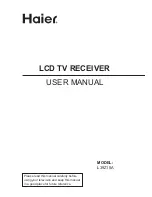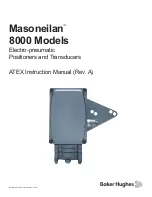
SATELLINE-M3-TR3,
–
TR4 and -R4
Integration Guide, Version 3.4
44
10
CONSIDERATIONS
10.1
EMI Interferers
The module is designed to be mounted inside a host device. The module is designed to withstand
EMI even beyond type approval requirements. However, a small module which is integrated
closely to modern highspeed electronics is bound to receive some interference.
To make a working integration, consider the following: EMI can enter the module in four ways:
1)
Via the antenna (radiation from enclosure enters the antenna)
2)
Radiated disturbances to the coaxial cable
3)
Radiation from other electronics / cabling directly to the module
4)
Conducting through the DTE interface (power, control and data lines).
Because the module is shielded and the DTE interface is filtered, the usually worst method of
disturbance is via the antenna port, which is easily overlooked in design. Keep in mind that the
radio module has a sensitivity of approx. -115 dBm (depends on mode of operation and speed
etc.). While the module has an approx. 10 dB S/N requirement, this constitutes, that any signal
entering the radio antenna on receive frequency on a level of < -125 dBm (-115dBm-10dB),
causes desensitization of the radio on that particular channel.
Example:
An interferer has a level of -100dBm on the frequency 421 MHz. The radio will show an
approximate sensitivity of -90dB (-S/N requirement 10 dB) on 421 MHz.
Now consider that generic EMC requirements usually have pass/fail criteria of -57 dBm (if
normalized to the surface of the device).
So there is almost a 70 dB gap between generic EMC
requirements and co-existence requirements between a high sensitivity narrowband
radios.
To avoid problems of co-existence a good design should apply:
1)
EMI shielding in enclosure
–
ambient air interface
2)
careful layout
3)
shielding of all digital highspeed parts and cables
4)
Have a clocking plan to avoid clock frequencies causing harmonics on
the UHF band of interest.
Number one is to recognize this challenge and act upon it.
SATEL R&D can help in this by participating in design review of the host device, aiming to catch
problems early in the design phase.
















































